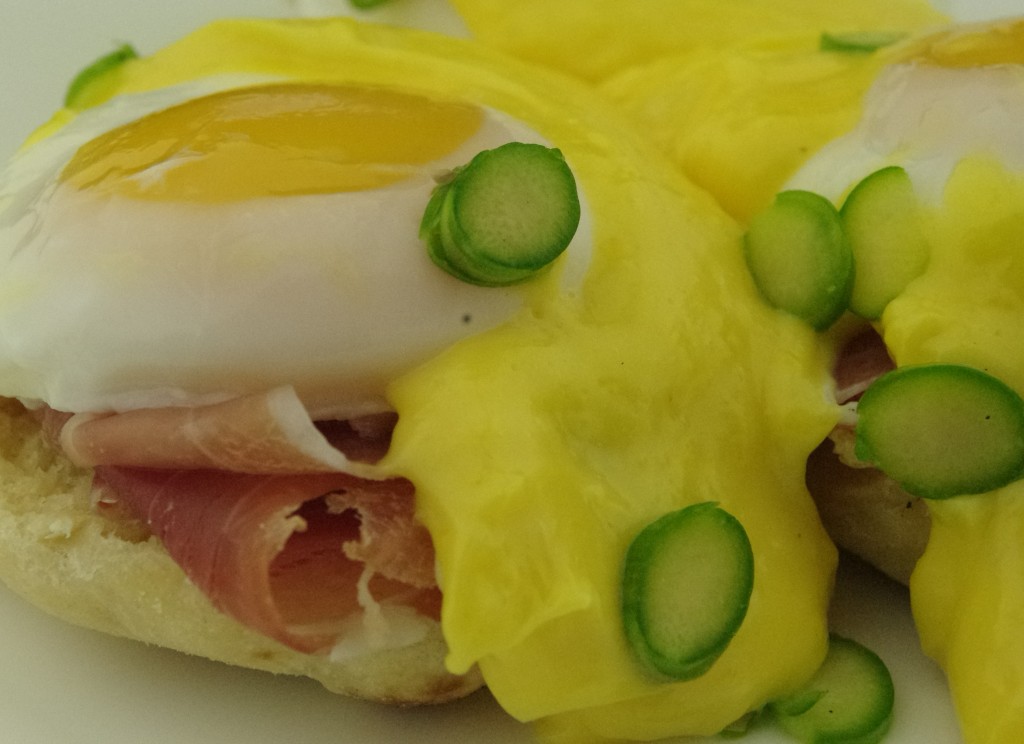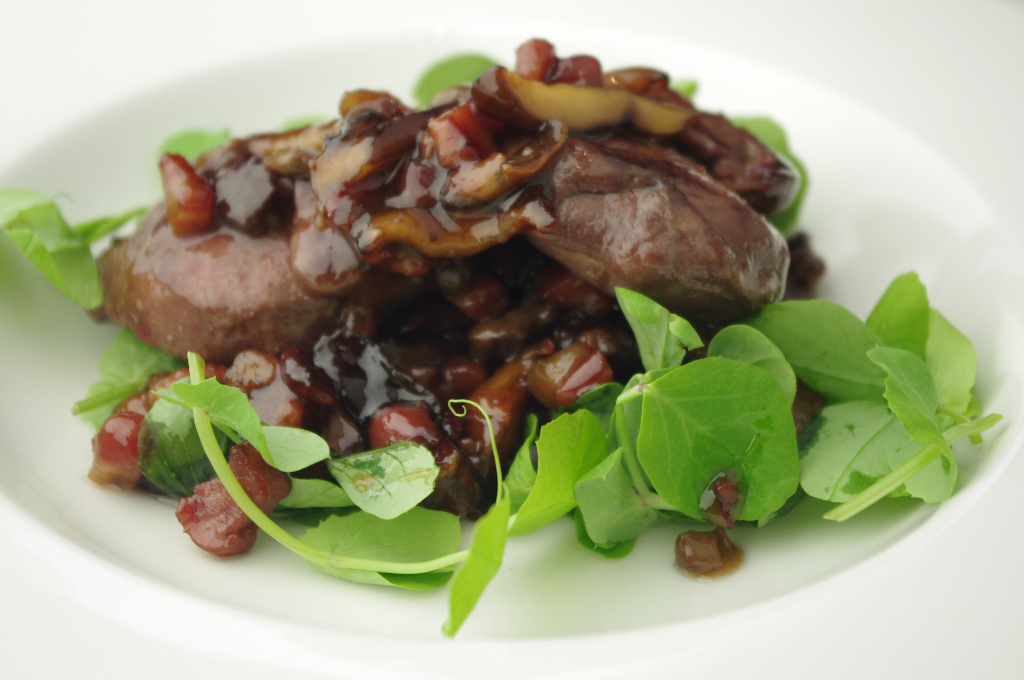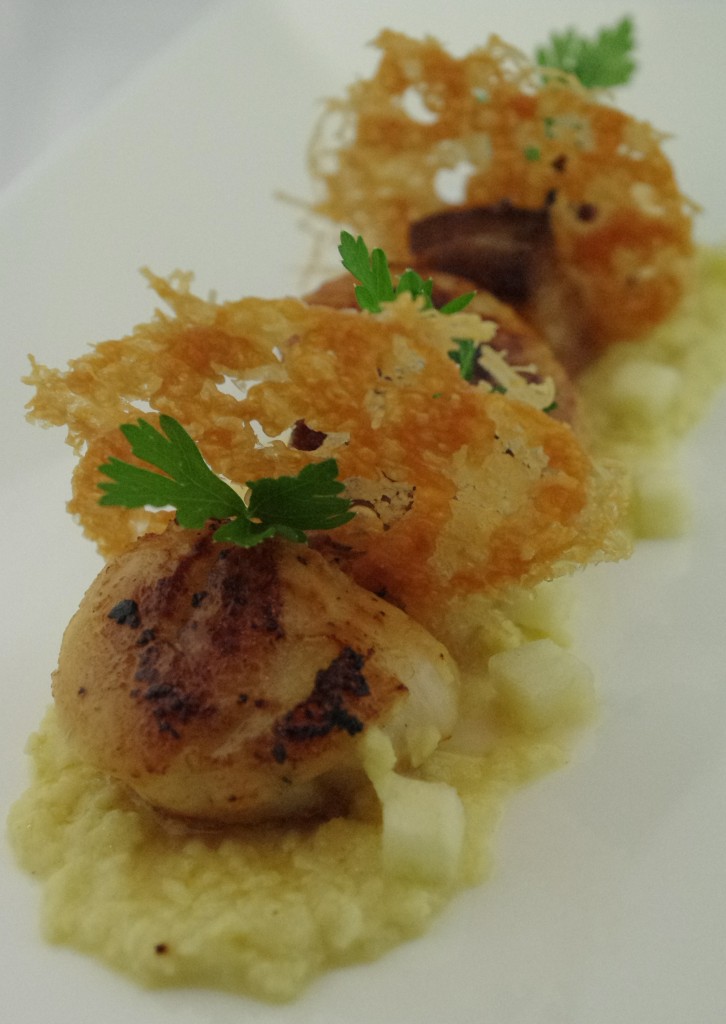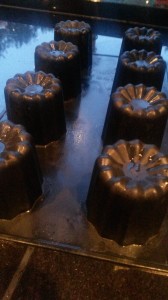

Seafood and lemon are well known culinary partners from preparations of salmon to the time honoured prawn cocktail. My aim was to produce a piquant seafood reduction with perfect balance of the seafood flavour with citrus acidity. Limoncello as an alternative to cognac seemed to be the answer. I hope you like it as much as I do.
The term quenelle originates from the German word ‘Knödel’ meaning noodle or dumpling. The common fish to use are the more subtle flavoured cod, trout or haddock, although pike is excellent. I have used hake which I feel worked very well. Do not add salt to the stock or sauce as there will be saltiness provided by the baby clams. This dish goes well with crusty bread.
This recipe makes enough for about 24 quenelles
For the fish stock
5 tbsp olive oil
1 onion, peeled and diced
2 sticks celery, diced
1 leek (white part only), diced
1 fennel, diced
2 turnips, peeled and diced
2 carrots, peeled and diced
8 oz (250 mgs) white button mushrooms, sliced
10 black peppercorns
1/2 pint (approx 250mls) dry white wine (boiled for 2 minutes)
4 1/2 pts (2.5 L) cold water
2 lbs (1kg) chopped washed fish bones (approx)
Heat the olive oil in a large pot and sauté the onion until it is soft but not browned. Add the rest of the ingredients then deglaze with the boiled wine. Add the bones, stir carefully and then fill the pan with cold water until the bones are covered. Skim off the impurities from the surface frequently as the stock comes to a simmer then cover. Simmer for about 40 minutes. Strain off the stock carefully into a container.
For the limoncello seafood reduction
2 oz (50 gms) unsalted butter
18 raw tiger prawns
3 tbsp tomato purée
1 lbs (0.5 kg) fresh baby clams
Fish stock (see above)
Juice of two lemons
1/2 cup (120 mls) double cream
4 – 6 tbsp limoncello
2 teaspoons beurre manié ( equal amounts of softened butter and flour combined to a paste)
2 egg yolks
1 tbsp double cream
Gently warm the butter in a pot. Carefully separate the shells from the prawns. Add the shells to the hot butter and sauté them until they turn red. Remove the shells then add the retained prawns and sauté them gently until they lose their grey colour. Add the tomato purée and stir gently then add the clams, again stirring gently. Add the fish stock and simmer covered for about 20 minutes. Strain the liquid into another pot. Reduce the liquid by about a half then add the lemon juice and cream, Stir then add sufficient limoncello to your liking. Add the beurre manié and whisk until the liquid is thickened. Whisk together the egg yolks and the tbsp double cream. Take the sauce off the heat and incorporate the egg/cream mixture.

For the quenelles
2 oz (50 gms) butter
1 1/4 cups (300 mls) milk
Breadcrumbs, prepared in a food processor from two slices of crustless white bread
2x 6 inch (15 cms) skinless fillets of hake, cut into small pieces and chilled
1 1/2 tbsp lemon juice
pinch of nutmeg
2 eggs
sea salt and black pepper
1 cup (250 mls) double cream
First gently melt the butter and in a china bowl, mix together the butter with the milk and breadcrumbs to form a paste. Cover with cling film and refrigerate for at least half an hour. Place the chilled paste into a food processor the add the chilled hake fillet pieces and all the rest of the ingredients except for the cream. Blend until the paste is very smooth but not for so long that it is given a chance to warm. Add the cream and combine for about ten seconds in the blender. Transfer the paste into a china bowl, cover and refrigerate.
The quenelle shape is achieved with the use of two warm spoons of the same size that are held in each hand. Using the spoon in the dominant hand, scoop out a spoonful of the hake paste. Use the second spoon to scoop out the contents of the first spoon by sliding into the base of the bowl of the first spoon. Transfer the paste back to the first spoon in the same manner. The repeated transferring between spoons will then begin to create a smooth, rounded surface to the paste. Keep scooping back and forth, moulding the paste until you have a smooth oval shape.
Bring a wide shallow pan of lightly salted water to a simmer. Carefully place the quenelles into the simmering water for about two minutes then carefully turn them over and simmer for another two minutes. Place the quenelles into a soup or gratin dish then pour the seafood reduction over them.



















